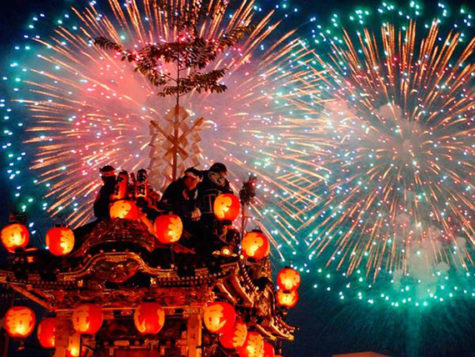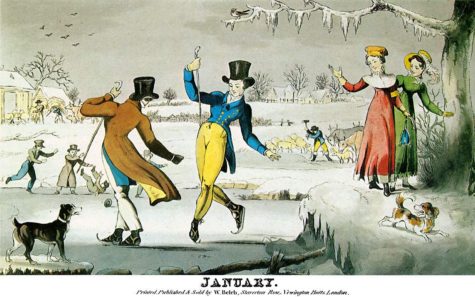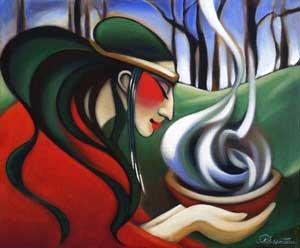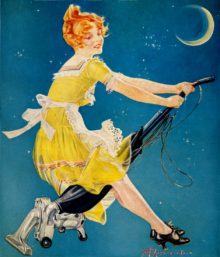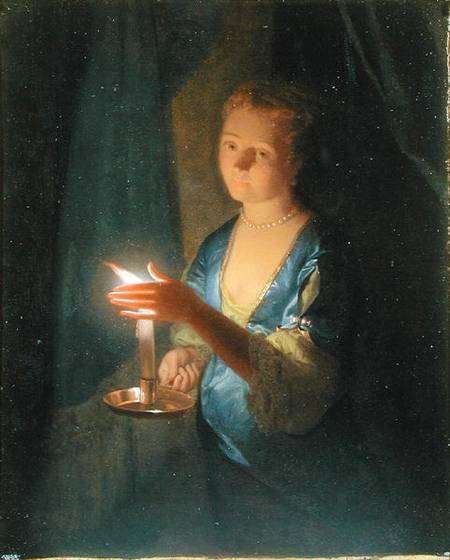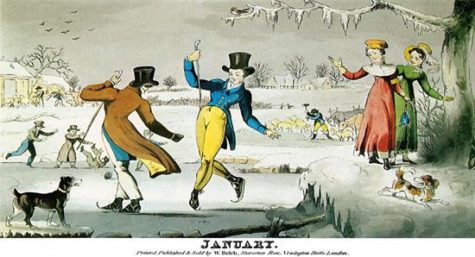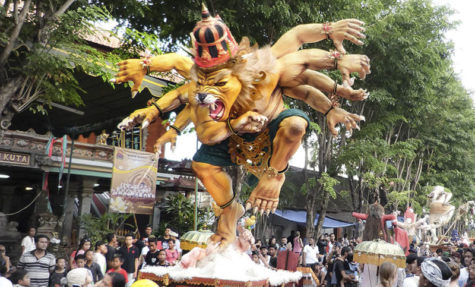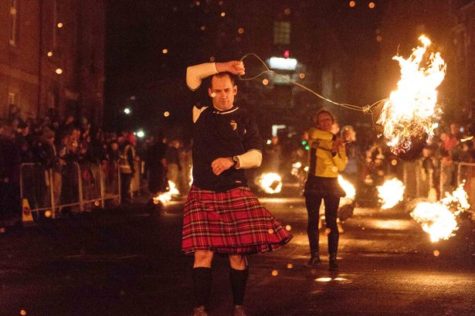New Years Eve
Shinto holy day marking a new year. On this day the faithful visit shrines to thank the kami (spirits within objects in the Shinto faith), ask the kami for good fortune, and make resolutions for the year ahead.
Traditionally, Shinto practitioners observe this New Year holiday by visiting the shrines, mostly at midnight and praying for the renewal of their heart, prosperity and health in the year to come. It is also common to visit close friends and family to express good wishes.
This festival concentrates on the deep unrecognized awareness and respect for the divine energy that permeates all forms of life. It is one of the most significant yearly festivals in Shintoism.
Though the New Year is predominantly celebrated on the first day of the year, traditionally the Shinto’s celebrate Gantan-sai for a prolonged span of seven days.
Much like Christmas for Christians, Gantan Sai has become a national holiday in Japan and expanded out past the Shinto religious practices and evolved into a national holiday. It is referred to as the Japanese New Year or Shogatu .It is observed on the first day of the Gregorian calendar i.e. the 1st of January and is the annual New Year celebration of the Shinto religion.
Originally, the date of the Japanese New Year was decided according to the Chinese Lunar Calendar and the date varied each year. However, in 1873, five years since the Meiji Restoration, the people of Japan adopted the Gregorian calendar and fixed the date of Japanese New Year or Shogatu to be the 1st of January every year, and it has been so ever since.
Traditions and Practices:
During this festival, most Shinto’s spend the holiday by visiting sacred Shinto temples at the hour of midnight.
During this visit, they wear their finest clothes and pray that their hearts be renewed and purified of all dirt and uncleanliness.
- Blessings for health, happiness and prosperity are also requested for the upcoming year.
- This festival also witnesses friends and families coming together to wish well for each other.
On this day, people eat traditional food with their families. Gantan-sai day meals involve a special compilation of dishes known as “Osechi”. The typical New Year Day menu comprises of dishes like Ozoni a soup, Mochi with vegetables, Kamabokoa puree of steamed white fish, Kurikinton mashed sweet potato with chestnut and Kuromame sweet black beans.
Source: Gatan-sai
The word January comes from the Roman name for this month; it was named after the god Janus who had two faces. This deity ruled over beginnings and endings, the past and future. Since January is reckoned as the first month of a new year, this connection with the god Janus is appropriate. It is an excellent time to work on putting aside the old and outdated in one’s personal life and making plans for new and better conditions.
Correspondences for January:
- Nature Spirits: gnomes, brownies
- Herbs: marjoram, holy thistle, nuts and cones
- Colors: brilliant white, blue-violet, black
- Flowers: snowdrop, crocus
- Scents: musk, mimosa
- Stones: garnet, onyx, jet, chrysoprase
- Trees: birch
- Animals: fox, coyote
- Birds: pheasant, blue jay
- Deities: Freyja, Inanna, Sarasvati, Hera, Ch’ang-O, Sinn
Power flow: sluggish; below the surface; A good time for spell work having to do with beginning and conceiving; protection; reversing spells; conserving energy by working on personal problems that involve no one else; getting your various bodies to work smoothly together for the same goals.
January Celebrations and Rituals:
The Chinese use the concept of putting aside the old and outdated in one’s personal life and making plans for new and better conditions in celebrating their New Year, which occurs on the first day of the New Moon when the Sun is in Aquarius. They considered this celebration a time for settling debts, honoring ancestors, and having family reunions. They carry paper images of dragons through the streets and set off fireworks to chase away evil entities and misfortune.
Tsao-Wang was the Chinese kitchen god or deity of the hearth and domestic comfort; his picture hung above the stove. He was the protector of the family and recorder of their actions and words. His report at the end of each year to the Heavenly Jade Emperor was said to determine the family’s coming fortune. Because of this, the Chinese burned the old picture-image and put up a new one a few days before New Year. His wife had the task of reporting on female family members.
Even the people of Tibet, whose year began about the end of January, had a celebration for expelling the Old Year. They made a dough image for the demons to inhabit, then worshiped them for seven days. At the end of that period, they took the image outside the village to a crossroad and abandoned it. The idea behind this seems to have been that the negative beings who had accumulated during the Old Year, received recognition for their existence, but also received a firm statement, by the action of leaving their image outside the village, that they were not welcome to hang around.
Most cultures had some ceremony for ending an old cycle of the calendar and celebrating the beginning of a new cycle. Physical activity acknowledging the end and beginning of cycles sets off similar changes in the subconscious mind. This change in the subconscious is necessary in order for actual physical changes to come about. Such rituals are helpful when one faces the end of cycles in relationships, career, residence, or other life situations.During the Feast of Kore, which was held at night with much feasting and dramatics, a group of initiates bearing torches went down into the goddess’s underground chamber. With much ceremony and reverence, they brought out the wooden statue of Kore, naked except for her golden jewelry. The statue was placed on a decorated litter and carried seven times around the temple. The Greeks considered that the number seven brought luck and success.
The Incan festival of Camay Quilla was held at the New Moon.
The Seven Deities of Luck in Japan were honored during a three-day festival called San-ga-nichi. To avoid good luck being swept away, there was no sweeping during this festival. These Seven Deities are also called Shichi Fukujin or Shichi-Kukujin, which means “Seven Gods of Happiness.” There are six gods and one goddess that make up this little group. They sail about in a treasure ship called a takarabune.
The New Year represents a new beginning in every way. Clearing up unfinished business, of whatever kind, is a good notion, and blowing away the cobwebs from the old year that has passed is no bad thing either. In parts of Scotland this was accomplished by the juniper and water rite.
After sunset on New Year’s Eve, people went out to gather branches of juniper and buckets of fresh water from a well or stream. The branches were then placed by the fire to dry out. In the morning the head of the household took a first drink of the water and then went around the house sprinkling everyone with a few drops.
This done, all doors and windows were closed tight and the branches of dried juniper were set alight and taken through the house until everything was thoroughly fumigated. This almost certainly dates back to a very old rite in which the sacred juniper was burned at fireplaces to ensure the gifts of the New Year were properly celebrated.
We can still do this today, since there are numerous kinds of incense made from juniper, or if we are adventurous enough we can make our own. Taken through the house this leaves a pleasant aroma and gives us a sense of new beginnings.
From The Silver Bough we have this nice little New Year’s Eve folk tradition::
The house received a mini spring-cleaning. Slops and ashes, which are usually removed in the morning, are carried out. Debts must be paid, borrowed articles returned, stockings darned, tears mended, clocks wound up, musical instruments tuned, pictures hung straight; brass and silver must be glittering; fresh linen must be put on the beds. Even in the slummiest houses… brooms and pails, soap, polishing rags and darning-needles emerge from neglected cupboards and drawers, and the bairns receive a thorough scrubbing in honor of the New Year.
New Year’s Eve is traditionally a time for assessing the past twelve months and for looking ahead to the New Year. Numerous customs are still retained in Europe and the United States, including the idea of kindling a new light from the old. This can be achieved in a number of ways, including the following simple ceremony.
At a few minutes to midnight, put out all of your lights except for a single candle or a lantern (it’s important that the light be a living one rather than electric). Send someone outside (traditionally it is someone who has dark hair) with the light, which they must guard and protect from the weather. As the clock strikes twelve have that person knock on the door. Open it and welcome them in with some form of ceremonial greeting, such as:
Welcome to the light of the New Year
And welcome he/she who brings it here.
Go around the house with the candle and relight all the lights you put out. If these can be candles so much the better, but don’t burn the house down In Scotland this custom is known as “First Footing,” and the person who first puts his or her foot across the door is the one who brings fortune to the whole household. Often someone in the house arranges with a friend to come to the house at the exact time carrying a gift – called a handsel in Scotland and consisting of a lump of coal, or a bottle of whiskey – something that will ensure that more gifts come throughout the next twelve months.
Source: The Winter Solstice
First Footing Lore:
 The first person to enter your home after the stroke of midnight on New Year’s Eve will influence the year you’re about to have.
The first person to enter your home after the stroke of midnight on New Year’s Eve will influence the year you’re about to have.
Ideally, he should be dark-haired, tall, and good-looking, and it would be even better if he came bearing certain small gifts such as a lump of coal, a silver coin, a bit of bread, a sprig of evergreen, and some salt.
Blonde and redhead first footers bring bad luck, and female first footers should be shooed away before they bring disaster down on the household. Aim a gun at them if you have to, but don’t let them near your door before a man crosses the threshold.
The first footer (sometimes called the “Lucky Bird”) should knock and be let in rather than unceremoniously use a key, even if he is one of the householders.
After greeting those in the house and dropping off whatever small tokens of luck he has brought with him, he should make his way through the house and leave by a different door than the one through which he entered.
No one should leave the premises before the first footer arrives – the first traffic across the threshold must be headed in rather than striking out.
First footers must not be cross-eyed or have flat feet or eyebrows that meet in the middle.
Nothing prevents the cagey householder from stationing a dark-haired man outside the home just before midnight to ensure the speedy arrival of a suitable first footer as soon as the chimes sound.
If one of the partygoers is recruited for this purpose, impress upon him the need to slip out quietly just prior to the witching hour.
Source: Snopes.com
January starts the year with a plethora of fun, frolicsome festivity. The new year in particular is celebrated by at least 170 nations. In terms of energy, January focuses on beginnings. It’s a time for personal renewal, starting any beloved project, and sustaining those things already in progress.Magic for health, protection, and prosperity is particularly augmented by working during this month. It’s also good time for spell work having to do with beginning and conceiving; protection; reversing spells; conserving energy by working on personal problems that involve no one else; getting your various bodies to work smoothly together for the same goals.
Weather Watching:
It is said that whatever the weather is like the first twelve days of January indicates what the weather will be like for the next twelve months. Each day equals one month in succession.
January Birth Signs
(Celtic, Nordic, Astrological, etc)
- Dec 22 to Jan19 – Sun in Capricorn
- Dec 22 to Jan 21 – Sign of the Carnation Flower
- Dec 23 to Jan 1 – Sign of the Apple Tree
- Dec 24 – Jan 21 – Sign of the Birch Tree
- Jan 1 to Jan 11 – Sign of the Fir Tree
- Jan 12 to Jan 24 – Sign of the Elm Tree
- Jan 21 and Feb 19 – Sign of the Orchid Flower
- Jan 21 to Feb 19 – Sun in Aquarius
- Jan 21 – Feb 17 – Sign of the Rowan Tree
- Jan 25 to Feb 3 – Sign of the Cypress Tree
January – the month of new beginnings. January was introduced into the Roman calendar by a legendary king of Rome, Numa Pompilius (c. 715 – 673 BCE), who named it in honor of Janus, the god of doors and openings, beginnings and endings.
Since January is reckoned as the first month of a new year, this connection with the god Janus is appropriate. It is an excellent time to work on putting aside the old and outdated in one’s personal life and making plans for new and better conditions.
In Bali, the last day their 210 day Saka calendar marks the Balinese feast of purification. This is the time of the year when the lord of hell cleans out his underworld lair, and all manner of demons and evil spirits are left to roam Bali free.
During this time….when evil is afoot……the natives go to elaborate lengths to purify both their individual homes as well as the island. No corner or stone is left untouched as rites of purification and spells for protection are recounted
On this Saka New Year’s Eve, it is all blaring noise and merriment. Every Balinese household starts the evening with blessings at the family temple and continues with a ritual called the pengrupukan where each member participates in ‘chasing away’ malevolent forces, known as bhuta kala, from their compounds – hitting pots and pans or any other loud instruments along with a fiery bamboo torch.
These ‘spirits’ are later manifested as the ogoh–ogoh to be paraded in the streets. As the street parades ensue, bamboo cannons and occasional firecrackers fill the air with flames and smoke. The Nyepi Eve parade usually starts at around 19:00 local time.
This date varies from year to year, in 2019, it falls on March 6. It is based on the Saka calendar of western Indian origin, one among the many calendars assimilated by Indonesia’s diverse cultures. The Saka is 78 years behind the Gregorian calendar, and follows a lunar sequence.
If you’d like to honor this tradition, here is a simple house cleansing ritual:
You will need a broom, some sea water, or rain water with some sea salt dissolved in it, and an Asperger (optional). Open all the windows and doors in your house and starting from the center sweep the whole house. Move Deosil (clockwise) as much as possible. As you go, visualize all negativity as a wispy grey cloud which you are driving out through the windows and doors.
Now take your salt water (and Asperger if you have one) and sprinkle the salt water around the boundaries of your whole home, making sure that you include the sills of all the doors and windows. Be very careful not to make everything too wet, or to sprinkle any electrical equipment, switches or sockets, etc.
As you do each door or window say: “I mark this boundary that no negativity be allowed to enter here. Blessed be.” and then close it.
If the weather is really inclement you may need to work room by room rather than doing the whole house in one go. In this case make sure you cover the boundaries between rooms and any passageways, stairs, etc. without windows.
Note: This house cleansing ritual can be used at any time.
Whenever you move into a new home it is as well to cleanse it to remove any residual negative energies which may have been left behind by the previous occupants. You may also like to do this after any period of upset in your home to thoroughly drive out the problem, or if you have been visited by someone who seems to have left some of their negativity behind them.
Sources:
To celebrate the New Year fireballs swing in Stonehaven, Scotland.
The ceremony consists of mainly local people of all ages swinging flaming wire cages, around their heads. Each cage is filled with combustible material (each swinger has their own recipe) and has a wire handle two or three feet long, this keeps the flames well away from the swinger, but spectators can be vulnerable! At the end of the ceremony, the fireballs are tossed into the bay.
The event starts at midnight and is watched by thousands. The idea behind the ceremony is to burn off the bad spirits left from the old year so that the spirits of the New Year can come in clean and fresh.
From current research the ceremony would seem to go back from a hundred to a hundred and fifty years, but it could easily be much older.
The ceremony today lasts only around twenty to thirty minutes but in the past it could last an hour or more. Then, some of the swingers would swing their fireball for a few yards and then stop outside a house that was occupied by someone that they knew. They would drop their fireball at the curbside and pop in for their ‘New Year’! After a while they would come out, pick up their ‘ball’ and swing on down to the next house, and so on. As quite a number of the swingers would have had many relatives and friends staying in area it could take some time to get from one end of the street to the other!
In the early years, according to the newspaper reports, it would seem that it was mainly the male youths of the older ‘fisher’ town that were involved in the custom but once into the sixties the newspaper reports are of older men and women being involved as well.
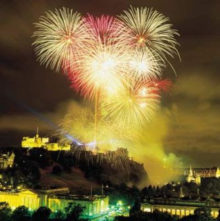 In Scotland, the last day of the year is called Hogmanay, the word children use to ask for their traditional present of an oatmeal cake (which is why this is also called Cake Day). Traditionally, children in small towns would wander about town, particularly in the more affluent neighborhoods, visiting their neighbors of the better class, crying at their doors, “Hogmanay!” or sometimes the following rhyme:
In Scotland, the last day of the year is called Hogmanay, the word children use to ask for their traditional present of an oatmeal cake (which is why this is also called Cake Day). Traditionally, children in small towns would wander about town, particularly in the more affluent neighborhoods, visiting their neighbors of the better class, crying at their doors, “Hogmanay!” or sometimes the following rhyme:
Hogmanay, trollolay,
Gie’s of your white bread
and none of your gray!
In obedience to which call, they are served each with an oaten cake. Immediately after midnight it is traditional to sing Robert Burns’ “Auld Lang Syne”
“Should auld acquaintance be forgot and never brought to mind?
Should auld acquaintance be forgot and auld lang syne
For auld lang syne, my dear, for auld lang syne,
We’ll take a cup o kindness yet, for auld lang syne.”
Fireworks and fire festivals are still common across Scotland, as are parties and celebrations of all kinds. There are many customs, both national and local, associated with Hogmanay. The most widespread national custom is the practice of ‘first-footing’ which starts immediately after midnight. This involves being the first person to cross the threshold of a friend or neighbor and often involves the giving of symbolic gifts such as salt (less common today), coal, shortbread, whisky, and black bun (a rich fruit cake) intended to bring different kinds of luck to the householder. Food and drink (as the gifts) are then given to the guests.
This may go on throughout the early hours of the morning and well into the next day (although modern days see people visiting houses well into January). The first-foot is supposed to set the luck for the rest of the year. Traditionally, tall dark men are preferred as the first-foot. And of course, the entire spirit of a Hogmanay party is to welcome both friends and strangers with warm hospitality and of course lots of kissing all-around!
It’s believed that Hogmanay originated with the invading Vikings who celebrated the passing of the winter solstice with much revelry, but the roots of Hogmanay perhaps reach back to the celebration of the winter solstice among the Norse, as well as incorporating customs from the Gaelic New Year’s celebration of Samhain.
In Rome, winter solstice evolved into the ancient celebration of Saturnalia, a great winter festival, where people celebrated completely free of restraint and inhibition. The Vikings celebrated Yule, which later contributed to the Twelve Days of Christmas, or the “Daft Days” as they were sometimes called in Scotland. The winter festival went underground with the Protestant Reformation and ensuing years, but re-emerged near the end of the 17th century
Each area of Scotland often developed its own particular Hogmanay ritual.
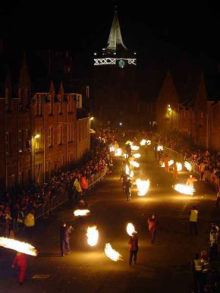 An example of a local Hogmanay custom is the fireball swinging that takes place in Stonehaven, Aberdeenshire in north-east Scotland. This involves local people making up ‘balls’ of chicken wire filled with old news paper, dried sticks, old cotton rags, and other dry flammable material up to a diameter of 60 cm. Each ball has approximately 1 m of wire, chain or nonflammable rope attached.
An example of a local Hogmanay custom is the fireball swinging that takes place in Stonehaven, Aberdeenshire in north-east Scotland. This involves local people making up ‘balls’ of chicken wire filled with old news paper, dried sticks, old cotton rags, and other dry flammable material up to a diameter of 60 cm. Each ball has approximately 1 m of wire, chain or nonflammable rope attached.
As the Old Town House bell sounds to mark the new year, the balls are set alight and the swingers set off up the High Street from the Mercat Cross to the Cannon and back, swinging their burning ball around their head as they go for as many times as they and their fireball last. At the end of the ceremony any fireballs that are still burning are cast into the harbor.
Many people enjoy this display, which is more impressive in the dark than it would be during the day. As a result large crowds flock to the town to see it, with 12,000 attending the 2007/2008 event. In recent years, additional attractions have been added to entertain the crowds as they wait for midnight, such as fire poi, a pipe band, street drumming and a firework display after the last fireball is cast into the sea. The festivities are now streamed live over the Internet.
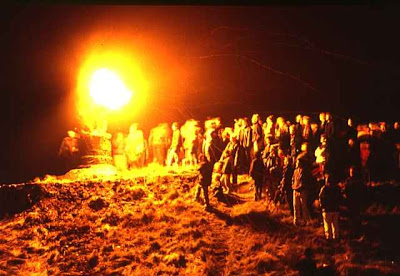
Another example of a pagan fire festival is the burning the clavie which takes place in the town of Burghead in Moray.In the east coast fishing communities and Dundee, first-footers used to carry a decorated herring while in Falkland in Fife, local men would go in torchlight procession to the top of the Lomond Hills as midnight approached. Bakers in St Andrews would bake special cakes for their Hogmanay celebration (known as ‘Cake Day’) and distribute them to local children.
In Glasgow and the central areas of Scotland, the tradition is to hold Hogmanay parties involving singing, dancing, the eating of steak pie or stew, storytelling and consumption of copious amounts of alcohol, which usually extend into the daylight hours of January 1.
Institutions also had their own traditions. For example, among the Scottish regiments, the officers had to wait on the men at special dinners while at the bells, the Old Year is piped out of barrack gates. The sentry then challenges the new escort outside the gates: ‘Who goes there?’ The answer is ‘The New Year, all’s well.’
An old custom in the Highlands, which has survived to a small extent and seen some degree of revival, is to celebrate Hogmanay with the saining (Scots for ‘protecting, blessing’) of the household and livestock. This is done early on New Year’s morning with copious, choking clouds of smoke from burning juniper branches, and by drinking and then sprinkling ‘magic water’ from ‘a dead and living ford’ around the house (‘a dead and living ford’ refers to a river ford which is routinely crossed by both the living and the dead). After the sprinkling of the water in every room, on the beds and all the inhabitants, the house is sealed up tight and the burning juniper carried through the house and byre.
The smoke is allowed to thoroughly fumigate the buildings until it causes sneezing and coughing among the inhabitants. Then all the doors and windows are flung open to let in the cold, fresh air of the new year. The woman of the house then administers ‘a restorative’ from the whisky bottle, and the household sits down to their New Year breakfast.
Collected from various sources
